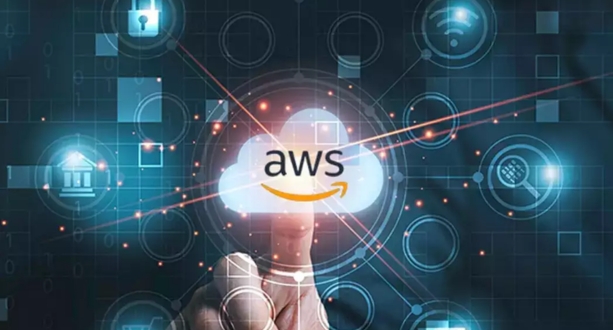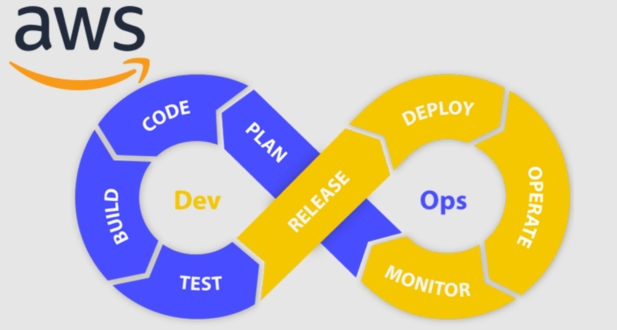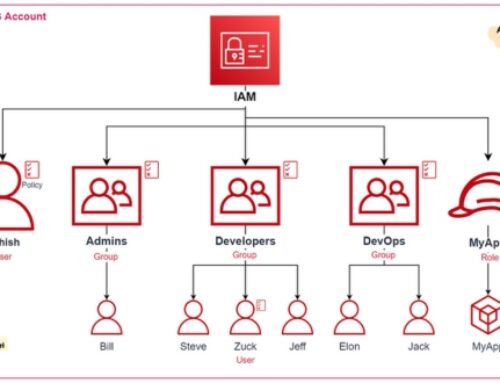Introduction to AWS DevOps Automation
Overview of DevOps
DevOps, a portmanteau of Development and Operations, represents a set of practices and cultural philosophies aimed at improving collaboration and communication between software development and IT operations teams. It breaks down traditional silos, fostering a more cohesive and streamlined approach to software delivery. Key DevOps principles include:
- Collaboration:
DevOps emphasizes a culture of collaboration between development and operations teams, breaking down the historical barriers that often lead to inefficiencies.
- Automation:
Automation plays a pivotal role in DevOps, allowing for the continuous integration and delivery of software. This ensures faster and more reliable releases.
- Continuous Integration (CI) and Continuous Deployment (CD):
CI/CD practices automate the building, testing, and deployment of code changes, enabling frequent and reliable releases.
Role of Automation in DevOps
- Streamlining Workflows:
Automation is the engine driving the streamlined workflows within DevOps. It eliminates manual, error-prone tasks, ensuring consistency in the software development lifecycle. Automated workflows facilitate rapid iteration and deployment.
- Enhancing Collaboration and Efficiency:
By automating repetitive tasks, DevOps teams can focus on higher-value activities, fostering a culture of innovation and efficiency. Collaboration improves as teams share automated processes and work towards common goals.
Significance of AWS in DevOps

- Leveraging AWS Services for Automation:
Amazon Web Services (AWS) offers a comprehensive suite of cloud services that can be leveraged to automate various aspects of the DevOps pipeline. AWS provides tools and services that align with DevOps principles, such as Infrastructure as Code (IaC) and managed services for continuous integration and deployment.
- Key Benefits of Using AWS in DevOps Practices:
- Scalability: AWS provides the ability to scale infrastructure resources up or down based on demand, ensuring that applications can handle varying workloads efficiently.
- Flexibility: AWS supports a wide array of programming languages, frameworks, and operating systems, offering flexibility in development and deployment choices.
- Managed Services: AWS offers managed services like AWS CodeDeploy, AWS CodePipeline, and AWS CodeBuild, which automate key aspects of the CI/CD procehttps://echopx.com/digital-marketing-services/ss, enhancing the DevOps workflow.
- Security and Compliance: AWS provides robust security measures and compliance features, allowing DevOps teams to build and deploy applications in a secure and compliant manner.
- Global Reach: AWS has a global presence with data centers in multiple regions, enabling DevOps teams to deploy applications closer to end-users for improved performance.
In essence, AWS DevOps automation combines the cultural philosophies of DevOps with the cloud services offered by AWS, creating a powerful synergy that accelerates software development, enhances collaboration, and ensures the delivery of high-quality, scalable applications. The following sections will delve deeper into specific concepts, tools, and best practices within AWS DevOps automation.
Key Concepts in AWS DevOps Automation

Infrastructure as Code (IaC)
- Introduction to IaC:
Infrastructure as Code (IaC) revolutionizes the way infrastructure is managed and provisioned. It involves representing infrastructure components through code rather than manual processes. This shift allows for consistent, repeatable, and scalable infrastructure deployments.
- AWS CloudFormation for Automated Infrastructure Provisioning:
AWS CloudFormation, a key player in IaC, enables the provisioning and management of AWS resources using declarative templates. These templates describe the desired state of the infrastructure, and CloudFormation automates the process of creating, updating, and deleting resources. This approach ensures infrastructure consistency across different environments.
Continuous Integration (CI)
- Implementing CI with AWS CodeBuild:
Continuous Integration (CI) focuses on automating the integration of code changes from multiple contributors into a shared repository. AWS CodeBuild is a fully managed CI service that compiles source code, runs tests, and produces ready-to-deploy artifacts. It integrates seamlessly with other AWS services and external CI tools, providing a scalable and efficient solution.
- Integrating CI Tools for Automated Code Validation:
CI tools like Jenkins, GitLab CI, or Travis CI can be integrated with AWS services to enhance code validation and integration. Automated tests, code quality checks, and static code analysis can be seamlessly incorporated into the CI pipeline. This ensures that every code change is thoroughly tested and validated before being merged into the main codebase.
Continuous Deployment (CD)
- AWS CodePipeline for Automated CD:
Continuous Deployment (CD) automates the release process, allowing code changes to be automatically deployed to production after passing CI. AWS CodePipeline is a fully managed CD service that orchestrates the end-to-end release process. It integrates with various AWS and third-party tools, enabling the creation of customizable deployment workflows.
- Blue/Green Deployments for Minimizing Downtime:
Blue/Green deployments are a CD strategy that mitigates downtime and reduces the impact of releases. This approach involves running two identical environments, with the “blue” environment serving production traffic. The new code release is deployed to the “green” environment, and traffic is switched once validation is complete. AWS provides tools like Elastic Load Balancers and Auto Scaling Groups to facilitate Blue/Green deployments seamlessly.
Incorporating these key concepts in AWS DevOps Automation lays the foundation for a robust and efficient software development lifecycle. The ability to define infrastructure as code, implement continuous integration, and automate deployment processes streamlines development workflows, enhances collaboration, and ensures the consistent delivery of high-quality software. The following sections will delve deeper into specific AWS DevOps tools and services that facilitate these key concepts.
AWS DevOps Tools and Services

AWS CodeDeploy
- Efficient Deployment Strategies:
AWS CodeDeploy streamlines the deployment process with flexible and efficient strategies. It supports in-place updates for minimal downtime, blue/green deployments for risk-free releases, and canary deployments to gradually roll out changes. This flexibility ensures that deployment strategies align with the specific needs and risk tolerance of each application.
- Integration with Various Application Architectures:
CodeDeploy seamlessly integrates with diverse application architectures, accommodating monolithic applications, microservices, and hybrid deployments. Its agent-based model allows it to deploy applications to various compute environments, including Amazon EC2 instances, on-premises servers, and even serverless Lambda functions.
AWS CodeCommit
- Securely Storing and Managing Code Repositories:
AWS CodeCommit provides a secure and scalable version control service for hosting Git repositories. It ensures the confidentiality and integrity of code with encryption in transit and at rest. Access controls, using AWS Identity and Access Management (IAM), enable fine-grained permissions, ensuring that only authorized individuals can access code repositories.
- Collaborative Coding with AWS CodeCommit:
CodeCommit facilitates collaborative coding workflows. It supports pull requests, enabling developers to review, comment, and merge code changes. Integration with AWS Cloud9, the cloud-based integrated development environment, enhances the coding experience by providing a collaborative and fully managed environment for software development.
AWS CodePipeline
- Building End-to-End CI/CD Pipelines:
AWS CodePipeline is a fully managed CI/CD service that automates the end-to-end software release process. It enables the creation of customizable pipelines that orchestrate the flow of code changes from source control through build, test, and deployment stages. CodePipeline integrates seamlessly with various AWS services and third-party tools, offering a comprehensive solution for continuous delivery.
- Visualizing and Managing Release Processes:
CodePipeline provides a visual representation of the entire release process, allowing teams to easily understand and manage complex workflows. The pipeline’s visual interface facilitates the monitoring of each stage, making it simple to identify bottlenecks or issues in the release cycle. Real-time updates and notifications keep teams informed throughout the entire process.
These AWS DevOps tools play a crucial role in automating key aspects of the software development lifecycle. CodeDeploy ensures efficient and reliable deployments, CodeCommit securely manages code repositories, and CodePipeline orchestrates end-to-end CI/CD pipelines. The integration of these tools creates a cohesive and automated DevOps ecosystem, enabling development teams to focus on innovation and delivery rather than manual processes.
Security and Compliance in AWS DevOps Automation
Automated Security Measures
- Incorporating AWS Identity and Access Management (IAM):
AWS Identity and Access Management (IAM) is a fundamental component in securing AWS DevOps workflows. IAM enables the management of user access to AWS resources, allowing the implementation of the principle of least privilege. Through IAM, organizations can create policies that define who can access specific resources and what actions they can perform.
IAM integrates seamlessly with AWS DevOps tools, ensuring that only authorized individuals have the necessary permissions to deploy code, configure infrastructure, and access sensitive information. By automating IAM policies and roles within the DevOps pipeline, organizations enforce consistent security practices across their environments.
- Utilizing AWS Key Management Service (KMS) for Encryption:
Data security is paramount in DevOps, especially when dealing with sensitive information. AWS Key Management Service (KMS) provides a robust solution for managing encryption keys, ensuring the confidentiality and integrity of data at rest and in transit.
In the DevOps context, integrating KMS into the automation process allows for the automatic encryption of artifacts, configuration files, and communication channels. This ensures that even in highly dynamic and automated workflows, data remains secure. Automated key rotation further enhances security by regularly updating encryption keys without manual intervention.
Compliance Automation
- Adhering to Regulatory Requirements with AWS Config:
Compliance with regulatory requirements is a critical aspect of DevOps operations, especially in industries with strict data protection standards. AWS Config is a service that assists organizations in ensuring compliance by providing a detailed inventory of AWS resources and their configurations.
Automating AWS Config within the DevOps pipeline enables continuous monitoring of resource configurations. Policies can be defined to check whether deployed resources adhere to predefined compliance standards. Any deviations trigger automated alerts or remediation actions, ensuring that the infrastructure remains in compliance with industry regulations.
- Automated Auditing and Reporting:
DevOps automation extends to the auditing and reporting processes to maintain transparency and accountability. Tools like AWS CloudTrail capture detailed logs of API calls, allowing organizations to trace every action taken within their AWS environment. By automating the analysis of CloudTrail logs, organizations can identify security incidents, monitor user activity, and generate compliance reports.
Additionally, automated reporting tools can consolidate information from various AWS services, providing a centralized view of security and compliance metrics. These reports not only assist in demonstrating adherence to regulatory standards but also serve as valuable insights for continuous improvement.
In summary, automated security measures and compliance practices in AWS DevOps are essential components for building robust and secure systems. By integrating IAM, KMS, AWS Config, and auditing tools into automated workflows, organizations can proactively manage security risks, adhere to regulatory requirements, and ensure the integrity of their DevOps processes.
Monitoring and Optimization in AWS DevOps Automation
Automated Monitoring with AWS CloudWatch
- Setting up Alarms and Notifications:
Automated monitoring is crucial for identifying and addressing issues in real-time. AWS CloudWatch provides a comprehensive monitoring solution for AWS resources, allowing DevOps teams to set up alarms based on predefined thresholds. Alarms trigger automated notifications, alerting teams to potential issues such as performance degradation, high resource utilization, or application errors.
Automated alarms ensure a proactive approach to monitoring, enabling teams to address issues before they impact end-users. The integration of CloudWatch with other AWS services and DevOps tools creates a centralized monitoring hub, providing visibility into the entire infrastructure.
- Analyzing Performance Metrics:
CloudWatch collects a rich set of performance metrics from various AWS services. By automating the analysis of these metrics, DevOps teams gain insights into system performance, resource utilization, and application behavior. Automated dashboards and reports facilitate the visualization of key metrics, aiding in trend analysis and capacity planning.
Automated analysis also extends to anomaly detection, where machine learning algorithms identify deviations from normal behavior. This proactive approach allows teams to identify potential issues before they impact the user experience, enhancing overall system reliability.
Cost Optimization Strategies
- Automating Resource Scaling with AWS Auto Scaling:
Cost optimization is a critical aspect of DevOps, and AWS Auto Scaling is a key tool for dynamically adjusting resources based on demand. By automating the scaling of infrastructure resources, organizations can ensure optimal performance during peak usage and cost savings during periods of lower demand.
Auto Scaling policies, when automated, dynamically adjust the number of instances or resources based on predefined conditions. This ensures that applications are always right-sized, providing a balance between performance and cost efficiency. The automation of scaling activities, coupled with CloudWatch alarms, allows for a responsive and efficient resource management strategy.
- Utilizing AWS Trusted Advisor for Cost-Effective Configurations:
AWS Trusted Advisor is a valuable tool for cost optimization that provides automated checks on AWS best practices. By automating the use of Trusted Advisor, organizations receive proactive recommendations for optimizing costs, improving security, and enhancing performance.
Automated checks cover areas such as unused resources, overprovisioned instances, and opportunities for reserved instance utilization. The integration of Trusted Advisor into the DevOps pipeline ensures that cost optimization is an ongoing, automated process, rather than a sporadic manual review. This proactive approach results in continuous cost savings and improved resource efficiency.
In conclusion, monitoring and optimization are integral components of AWS DevOps automation. Automated monitoring with CloudWatch ensures real-time visibility into system health, while optimization strategies, including Auto Scaling and Trusted Advisor, contribute to cost-efficient and well-performing environments. The automation of these processes aligns with the DevOps philosophy of continuous improvement and efficiency.
Best Practices for Successful AWS DevOps Automation
Collaborative Development Culture
- Encouraging Cross-Functional Teams:
Successful AWS DevOps automation thrives in an environment where development, operations, and other stakeholders collaborate seamlessly. Encouraging cross-functional teams breaks down silos, fostering open communication and shared responsibility. This collaborative culture ensures that all team members understand the entire software delivery process, from code development to deployment and beyond.
- Implementing DevOps Best Practices:
DevOps best practices, such as version control, continuous integration, continuous deployment, and infrastructure as code, form the foundation of successful automation. By implementing these practices, teams ensure consistency, reliability, and speed in their DevOps workflows. Version control, for example, ensures that code changes are tracked, allowing for collaboration without risking code integrity.
Test Automation
- Incorporating Automated Testing in CI/CD Pipelines:
Automated testing is a critical aspect of DevOps automation, enhancing the reliability and quality of code changes. Integrating automated tests into CI/CD pipelines ensures that every code commit undergoes a battery of tests, including unit tests, integration tests, and acceptance tests. This automation catches issues early in the development process, reducing the likelihood of defects reaching production.
- Ensuring Code Quality and Reliability:
Automated testing not only identifies defects but also contributes to maintaining high code quality. Quality gates in CI/CD pipelines can automatically reject code changes that don’t meet predefined quality standards. This ensures that the codebase remains robust, reliable, and adheres to coding standards. Code quality metrics can be monitored over time, allowing teams to continuously improve their development practices.
Documentation and Knowledge Sharing
- Automated Documentation Processes:
Documentation is often overlooked but is a crucial aspect of successful DevOps automation. Automating documentation processes ensures that system configurations, deployment procedures, and infrastructure changes are well-documented and up-to-date. Automated documentation tools can generate comprehensive reports, reducing the manual effort required to keep documentation current.
- Fostering Knowledge Sharing Within the Team:
Knowledge sharing is a key pillar of a successful DevOps culture. Automation not only extends to technical processes but also to the dissemination of knowledge within the team. Collaborative platforms, documentation repositories, and regular knowledge-sharing sessions contribute to a collective understanding of the system architecture, workflows, and best practices.
In essence, adopting a collaborative development culture, incorporating test automation, and prioritizing documentation and knowledge sharing are fundamental best practices for successful AWS DevOps automation. These practices contribute to the creation of a resilient, efficient, and continuously improving DevOps ecosystem.
Case Studies: Successful Implementations of AWS DevOps Automation
Case 1: Enhancing Deployment Speed
Overview of Challenges and Solutions:
In this case study, a global e-commerce platform faced challenges related to slow and error-prone deployments, impacting their ability to release new features rapidly. The DevOps team implemented AWS DevOps automation to address these challenges.
Challenges:
- Manual deployment processes leading to inconsistencies.
- Lengthy deployment times causing delays in feature releases.
- High error rates during deployments affecting system reliability.
Solutions:
- Implemented AWS CodePipeline and AWS CodeDeploy to automate the end-to-end deployment process.
- Utilized Infrastructure as Code (IaC) with AWS CloudFormation for consistent and reproducible infrastructure setups.
- Integrated automated testing into the CI/CD pipeline to catch errors early.
- Introduced Blue/Green deployments to minimize downtime and enable seamless rollbacks.
As a result of these solutions, the e-commerce platform significantly enhanced deployment speed, reducing time-to-market for new features. The automated pipeline ensured consistent and error-free deployments, contributing to improved overall system reliability.
Case 2: Achieving Continuous Compliance
Implementing Automated Compliance Checks:
In this case study, a financial services organization sought to address compliance challenges in a highly regulated industry. The organization needed to ensure continuous compliance with industry standards and regulations while maintaining agility in their software development lifecycle.
Challenges:
- Manual compliance checks leading to delays and increased risk.
- Difficulty in maintaining and proving compliance over time.
Solutions:
- Implemented AWS Config to automate the tracking and monitoring of resource configurations.
- Defined compliance rules and policies within AWS Config to align with industry regulations.
- Automated periodic compliance checks to ensure ongoing adherence to standards.
- Integrated automated reporting for quick visibility into compliance status.
By implementing automated compliance checks with AWS DevOps tools, the financial services organization achieved continuous compliance, reducing the manual effort required for audits. The automated solution provided real-time insights into the compliance status of their AWS resources, allowing for proactive remediation and demonstrating a commitment to industry standards.
These case studies highlight the transformative impact of AWS DevOps automation in overcoming specific challenges and achieving notable improvements in deployment speed and continuous compliance.
Future Trends in AWS DevOps Automation
Emerging Technologies in DevOps
- AI and Machine Learning in Automation:
The future of AWS DevOps automation is poised to be heavily influenced by the integration of artificial intelligence (AI) and machine learning (ML). AI/ML technologies are increasingly being leveraged to optimize and enhance various aspects of the DevOps lifecycle.
- Predictive Analytics:
AI-driven predictive analytics will play a significant role in anticipating potential issues in the software development process. Machine learning algorithms can analyze historical data, identify patterns, and predict potential bottlenecks, allowing teams to proactively address challenges before they impact the delivery pipeline.
- Automated Decision-Making:
AI will contribute to automated decision-making within the DevOps pipeline. Intelligent systems can autonomously make decisions based on real-time data, such as dynamically adjusting resource allocations, optimizing deployment strategies, and recommending improvements to overall workflow efficiency.
- Self-Healing Systems:
The integration of AI and ML will lead to the development of self-healing systems in DevOps. Automated responses to incidents, coupled with intelligent troubleshooting, will reduce manual intervention during issue resolution. This ensures continuous system availability and resilience.
- Predictions for the Future of DevOps Automation:
- Increased Standardization:
The future will witness increased standardization of DevOps practices and tools, promoting interoperability and seamless collaboration across diverse technology stacks. Standardized DevOps practices will facilitate easier adoption of automation across industries.
- Integration of Security into DevOps:
As security becomes an integral part of DevOps practices (DevSecOps), future trends will see the integration of security measures into every stage of the DevOps lifecycle. Automated security checks and compliance validation will be seamlessly embedded into the automation pipeline.
- Hybrid and Multi-Cloud Automation:
With the rising adoption of hybrid and multi-cloud environments, DevOps automation will evolve to provide unified solutions that seamlessly integrate with diverse cloud platforms. This ensures consistent automation workflows regardless of the underlying cloud infrastructure.
In summary, the future of AWS DevOps automation will be marked by the transformative impact of emerging technologies such as AI and machine learning. These advancements will drive predictive analytics, automated decision-making, and the development of self-healing systems, ultimately shaping a more efficient and intelligent DevOps landscape. The ongoing standardization of practices and increased focus on security will further contribute to the evolution of DevOps automation.
Conclusion
AWS DevOps automation stands at the forefront of modern software development, driving efficiency, reliability, and innovation. Through the integration of cutting-edge technologies and best practices, AWS DevOps automation has revolutionized the software delivery lifecycle.
The collaborative culture fostered by DevOps principles encourages cross-functional teams to work seamlessly, breaking down silos and ensuring a holistic understanding of the entire development process. Test automation, coupled with continuous integration and continuous deployment, guarantees code quality and accelerates time-to-market.
Security and compliance are addressed through automated measures, incorporating AWS IAM, KMS, Config, and CloudWatch. These practices not only enhance security but also contribute to regulatory compliance, instilling confidence in stakeholders.
As we look to the future, the incorporation of AI and machine learning into DevOps automation promises predictive analytics, automated decision-making, and self-healing systems. Standardization, the integration of security into every DevOps stage, and adaptability to hybrid and multi-cloud environments underscore the ongoing evolution of AWS DevOps automation. In essence, AWS DevOps automation propels organizations towards a future where software development is not just automated but intelligent, collaborative, and well-prepared for emerging challenges.
DevOps automation is the use of tools and processes to streamline and automate the software development lifecycle. In AWS, it ensures efficient, repeatable, and error-free deployment of applications, fostering collaboration between development and operations teams.
AWS offers various services for DevOps automation, including AWS CodePipeline, AWS CodeBuild, AWS CodeDeploy, AWS CloudFormation, AWS Lambda, and more.
DevOps automation promotes collaboration by providing a common platform for both teams to work together seamlessly. It breaks down silos, encourages shared responsibility, and ensures a faster and more reliable delivery process.
IaC, often implemented with tools like AWS CloudFormation, allows teams to define and provision infrastructure using code. It ensures consistency, repeatability, and version control for infrastructure changes.
Automation enhances security by incorporating practices like automated compliance checks, identity and access management (IAM), encryption (AWS KMS), and continuous monitoring (AWS CloudWatch) into the deployment pipeline.








